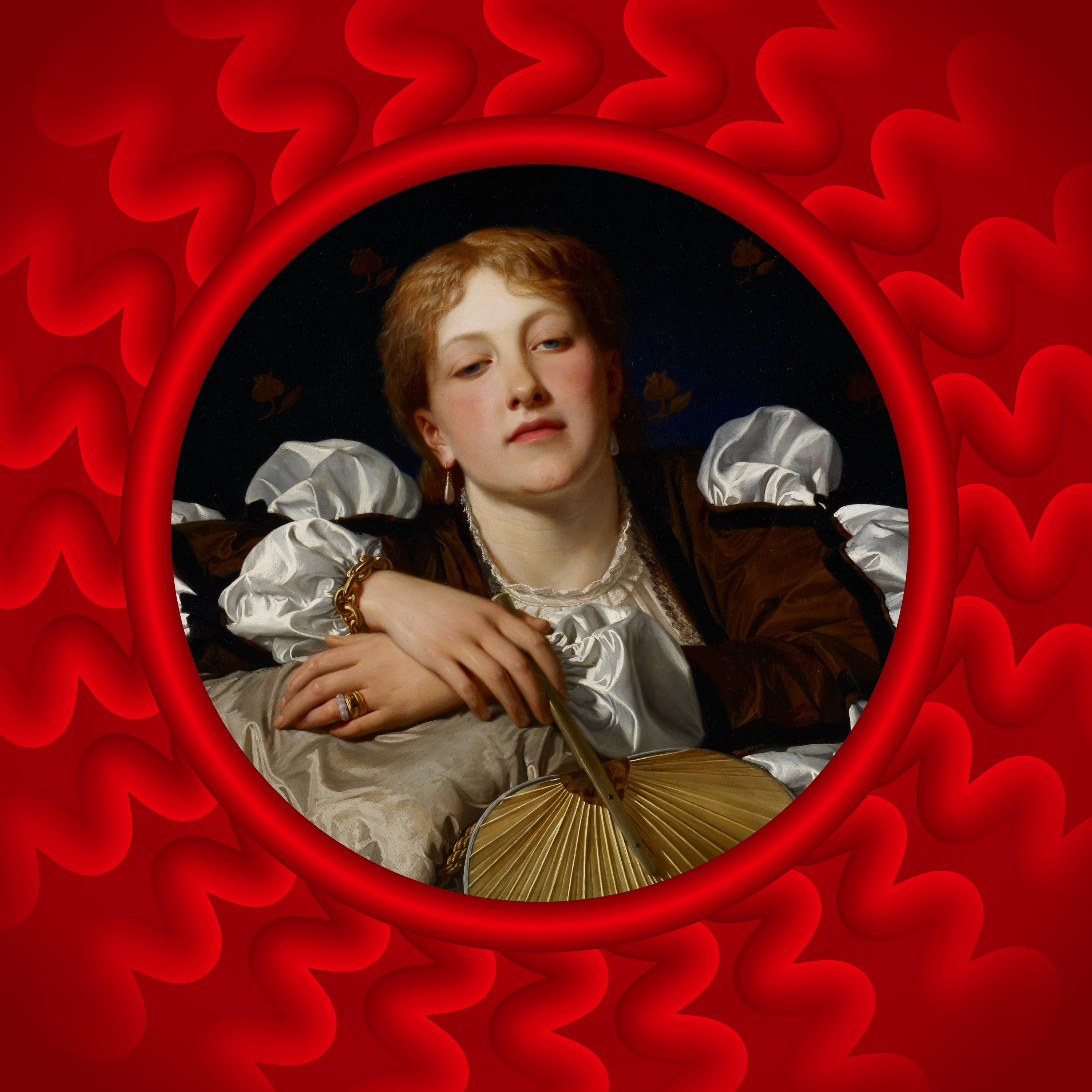Discover The Object
The Object

The Object
Author: The Object podcast from the Minneapolis Institute of Art
Subscribed: 126Played: 1,879Subscribe
Share
© All rights reserved
Description
"The Object" podcast explores the surprising, true stories behind museum objects with wit and curiosity. An object's view of us. Hosted by Tim Gihring, produced by the Minneapolis Institute of Art.
65 Episodes
Reverse
Thirty-five years ago, Joe Minter received a vision. Soon, his half-acre property outside Birmingham, Alabama, began to fill with sculpture—reflections on everything from slavery to 9/11 to climate change—fashioned out of junk: car parts, toys, industrial detritus, gizmos of all sorts. An elaborate example of the Southern Black tradition of the “yard show," with Minter as its genial showman. Now, it's among the last of its kind, and as museums and collectors come calling, the race is on to determine the fate of Minter’s art and how to think about it.
You can read more about Minter's art, and that of his fellow Alabama autodidacts, now on view at the Jule Collins Smith Museum of Fine Art at Auburn University, here: https://jcsm.auburn.edu/exhibitions/black-codes-art-and-post-civil-rights-alabama/
You can see one of Minter's creations, now at the Minneapolis Institute of Art, here: https://collections.artsmia.org/art/131461/old-rugged-cross-joe-minter
The premiere of Season 6! When the work of a brilliant but forgotten artist falls into the lap of a curator, it suggests something uniquely human: pleasure is good, unexpected pleasure even better. But when the surprises keep coming, years later, the story becomes both a mystery and a meditation on patience.
You can see the art of Richard Holzschuh here: https://collections.artsmia.org/search/Holzschuh
One week until Season 6 begins (March 11)! Here's a bonus encore episode, a highlight from a couple seasons ago about Georgia O'Keeffe and the loner legend that followed her to the end. In the early 1970s, when an ambitious curator comes calling, it seems the head ghost of Ghost Ranch is in fact the host with the most—and hardly ever alone. A fresh look at a myth we can’t stop believing.
It was a mystery: two dancers—one white, one Black—captured on stage in 1959 in a photograph found in a museum archive. Who were they? But a search for their identity uncovers much more: a forgotten history of art and integration. When the pursuit of modern ideals promised a better world, and the pursuit of art promised personal freedom. The farther from the New York spotlight, the better. You can watch Martha Graham's 1959 TV broadcast of "Appalachian Spring" here: https://www.youtube.com/watch?v=XmgaKGSxQVw And Katherine Dunham's "Ballet Creole" from 1952 here: https://www.youtube.com/watch?v=iSTuO5E9_1g
They are illusions, no more real than someone being sawed in half onstage. Yet the veiled ladies that Raffaelle Monti sculpts in the 1800s are very real to him. Poignant symbols of an identity he’s forced to conceal, even as they make him famous. As we prepare for Season 6, it’s an encore episode that first aired in 2021, a story of pride and prejudice and dreams just out of reach.
Here you can see Monti’s Veiled Lady, c. 1860, in the collection of the Minneapolis Institute of Art, a visitor favorite for more than half a century: https://collections.artsmia.org/art/12092/veiled-lady-raffaelo-monti
In 1942—years before becoming the first Black photographer for Life magazine, the director of Shaft, and a style icon the New York Times will hail as the “godfather of cool”—Gordon Parks is a young, ambitious photographer in Washington, D.C., struggling to document the injustice he’s found in the nation’s capital. Until, one day, he meets Ella Watson. Illustrating her life in photographs changes both of them, putting Parks on the path to fame and Watson in the minds of Americans as the heroic figure in one of the most iconic images of the century—known simply as Government Charwoman.
You can see the best-known photo from this series, American Gothic, here: https://collections.artsmia.org/art/100557/american-gothic-gordon-parks
You can see more photos from the series here: https://www.loc.gov/collections/fsa-owi-black-and-white-negatives/articles-and-essays/documenting-america/ella-watson-united-states-government-charwoman/
From the gift of fire to Pandora’s Box to the original white elephant, the long history of giving is also the history of receiving—a relationship fraught with desire, dubious intentions, and occasional disaster. It’s a playful journey down a winding chimney: four stories about our need to present each other with presents.
You can see Man Ray’s “Cadeau,” discussed in this episode, here: https://collections.artsmia.org/art/5343/gift-man-ray And an evocative 1914 take on Pandora’s Box here: https://collections.artsmia.org/art/55113/pandoras-box-timothy-cole And a rather realistic perspective on the gift-bearing magi: https://collections.artsmia.org/art/1785/journey-of-the-magi-james-tissot
In the 1890s, B.A. Haldane sets up a photography studio in Alaska and begins documenting the vibrant life of his Tsimshian community—even as non-Native photographers like Edward Curtis are trekking to reservations, documenting what they believe is a "vanishing race.” Quietly contradicting a president and scientists steeped in theories of white supremacy and evolution, Haldane and others offer an alternative vision only now being rediscovered. A story of resistance and resilience and what we miss by seeing only through our own lens.
You can see the photography of Haldane and other Native artists in "In Our Hands: Native Photography, 1890 to Now," on view at Mia: https://new.artsmia.org/exhibition/in-our-hands-native-photography-1890-to-now
And read more about him in the work of Tsimshian scholar Mique’l Dangeli: https://www2.unbc.ca/sites/default/files/events/45874/public-presentation-miquel-dangeli-re-developing-work-b.a.haldane-19th-century-tsimshian-photography/2018-02-14-miqueldangeli-b.a.haldanephotography.pdf
In the fall of 1930, Frida Kahlo and Diego Rivera travel to the United States for the first time, welcomed as celebrity artists, ambassadors of an ancient and powerful Latin American identity. But as the months turn to years, can Rivera’s vision of one united Pan-America--and their young marriage--survive the pressures of politics, fame, temptation, cultural differences, and scandal?
You can see examples of Diego Rivera’s work, and that of other modernist Mexican artists, in the collection of the Minneapolis Institute of Art: https://collections.artsmia.org/search/diego%20rivera
You can see Rivera’s San Francisco mural “Pan American Unity,” discussed on the show, here: https://www.sfmoma.org/exhibition/pan-american-unity/
You can see photos of Frida and Diego taking San Francisco by storm here: https://www.kqed.org/news/11848986/inside-frida-kahlo-and-diego-riveras-life-in-san-francisco
You can see (and read) Kahlo’s heartfelt letter to Rivera from a San Francisco hospital (“Diego, mi amor”) in the collection of the Smithsonian: https://www.si.edu/object/frida-kahlo-letter-diego-rivera%3AAAADCD_item_739
You can read about and see images from the SFMOMA’s excellent recent exhibition “Diego Rivera’s America” here: https://www.sfmoma.org/exhibition/diego-riveras-america/
Last and certainly not least, you can read some of the story “Queen of Montgomery Street,” written about Kahlo in San Francisco, also in the Smithsonian: https://www.si.edu/object/AAADCD_item_766
An ancient African water spirit, Portuguese slave traders, and a snake charmer traveling with the circus--incredibly, all of their stories collide in a narrative that spans centuries, continents, and the best and worst of human instincts. How do we find resilience among the wreckage? How do we shape the spirit world when this one has failed?
You can see the Mami Wata figure discussed in this episode in the collection of the Minneapolis Institute of Art: https://collections.artsmia.org/art/111879/mami-wata-figure-igbo
She was one of the most recognizable women in the world, her long copper hair filling painting after painting, even if few people knew her name: Fanny Cornforth. Model, muse, and mistress to the most influential artists of the Victorian era, she still had to fight for everything she got. Until, in the end, she lost the one thing she could count on for sure: herself.
You can see Fanny in this 1868 painting, "I know a maiden fair to see," in the collection of the Minneapolis Institute of Art: https://collections.artsmia.org/art/83645/i-know-a-maiden-fair-to-see-charles-edward-perugini
You can see the photograph mentioned in this episode--of Fanny, posing beside a mirror--here: http://www.rossettiarchive.org/docs/sa223.rap.html
He rose from scorn and poverty to become one of the most beloved and wealthy artists in history—the original rebel with a cause, dedicated to showing the world a new way of seeing. But what if Claude Monet's real cause was...Claude Monet? What if his rise was fueled by marketing, myth, and money? Can we still love him anyway?
Simeon Solomon—bold, dashing, and openly queer—is a rising star in the Victorian art world when a scandal in 1873 supposedly forces him into obscurity, a cautionary tale for fans like Oscar Wilde. But the truth is more complicated and only now coming to light, revealing the fate of this forgotten figure as both more tragic and more inspiring.
You can see an “allegorical self-portrait” here, from the collection of the Minneapolis Institute of Art: https://collections.artsmia.org/art/1686/allegorical-self-portrait-simeon-solomon
You can see his haunting masterwork “Love in Autumn” here: https://arthive.com/artists/1557~Simeon_Solomon/works/9454~Love_in_autumn
Truth, beauty, transcendence. For millennia, people think they know the rules of great art. Then, in the 1950s, a guy named Bob breaks every one of them, declaring car tires and Coke bottles and entirely blank canvases part of his art--and, in turn, being declared the greatest artist of his time. As war gives way to optimism, is Robert Rauschenberg offering a weary world a new way of seeing, or is he simply, entertainingly, lucratively bamboozling it?
Here, you can see Rauschenberg's 1970 exhibition at Gallery 12, atop Dayton's department store in Minneapolis: https://www.rauschenbergfoundation.org/art/archive/currents-daytons-gallery-12
Here's an iconic print, commissioned but ultimately rejected by Time magazine in 1969, acquired the following year by the Minneapolis Institute of Art when the museum held a major retrospective of his prints: https://collections.artsmia.org/art/7519/signs-robert-rauschenberg
And here's a boat hauling Rauschenberg's work across Venice for the 1964 Biennale: https://www.rauschenbergfoundation.org/art/archive/32nd-venice-biennale
As long as humans have made art, they have made art of naked humans. But why? From Greek gods romping in the buff to saints au naturel to modern “bathing beauties,” it’s the surprising story of a phenomenon as misunderstood as it is ubiquitous.
You can see one of Matisse's reclining nudes, mentioned in this episode and a great ab workout, here: https://collections.artsmia.org/art/1888/large-seated-nude-henri-matisse
And a photo of the real thing in studio here: https://collections.artsmia.org/art/4502/henri-matisse-brassai
The scandalous Caillebotte nude on a couch here: https://collections.artsmia.org/search/Caillebotte
One of many Saint Sebastians here: https://collections.artsmia.org/art/47994/saint-sebastian-martin-schongauer
And last but certainly not least, Dürer's winking image of men at the bath: https://collections.artsmia.org/search/Durer%20bath
The first episode of Season 5 is a story as old as life itself: things fall apart. But what really happened to all those ancient statues missing arms, legs, heads, and other appendages? How have we come to treat them as normal--a normal way of seeing the classical age, like paintings of the Renaissance or black-and-white photos of the 1900s? Have they shaped a perception of the past as more remote, mysterious, and, well, broken than it really was?
See some of the battered artworks mentioned in this episode, including the Tiber muse: https://collections.artsmia.org/art/1280/the-tiber-muse-graeco-roman
A Graeco-Roman torso: https://collections.artsmia.org/art/8483/torso-graeco-roman
An ancient Egyptian figure: https://collections.artsmia.org/art/1346/striding-figure-ancient-egyptian
And the Venus de Milo: https://collections.louvre.fr/en/ark:/53355/cl010277627
Season 5 of The Object begins Monday, March 6! Until then, enjoy this encore presentation of "The Black Musketeer," first broadcast in May 2022. The man behind "The Three Musketeers" and "The Count of Monte Cristo" was one of the richest, most popular authors in the world—an adventurous celebrity who could fight as well as write. But many of Alexandre Dumas’ readers today don’t know that he was Black—or that his best story may have been his own.
A portrait of Alexandre Dumas, widely reproduced in his day, was recently acquired by the Minneapolis Institute of Art:
collections.artsmia.org/art/142671/po…eugene-giraud
Another portrait of Dumas in Mia’s collection—younger, dashing, looking a little like Prince: collections.artsmia.org/art/54426/por…hille-deveria
In 1950, Robert Doisneau takes one of the most iconic photographs of Paris—a young couple kissing on the street—that eventually becomes a global symbol of romance, spontaneity, joie de vivre. But the real story is only now coming to light, a story about the world as it is and the world as we wish it to be.
You can see the photograph in question here, in the collection of the Minneapolis Institute of Art, but be sure to listen before you buy a ticket to Paris: https://collections.artsmia.org/art/11815/le-baiser-du-trottoir-robert-doisneau
Many people dream of finding a masterpiece in the attic, a closet, or a thrift store. In 2007, it happened to a church in a small town, and the story behind the painting is just as curious. It's a special bonus episode to start the new year with good vibes and a question: do you feel lucky? What would you do? Maybe you should listen to find out.
You can see the painting mentioned in this episode, "Christus Consolator," in the collection of the Minneapolis Institute of Art: https://collections.artsmia.org/art/104894/christus-consolator-ary-scheffer
In 1650, a less-than-holy artist is hired to paint a religious mystery even the pope isn't totally sure about. It's just one part of the Church's plan to counter its enemies with guns, inquisitions, and art, but the mystery—and the artist—will become increasingly popular as a new world threatens to end the old.
You can see the grand artwork mentioned in the show here, in the collection of the Minneapolis Institute of Art: https://collections.artsmia.org/art/1613/the-immaculate-conception-with-saints-francis-of-assisi-and-anthony-of-padua-giovanni-benedetto-castiglione






















